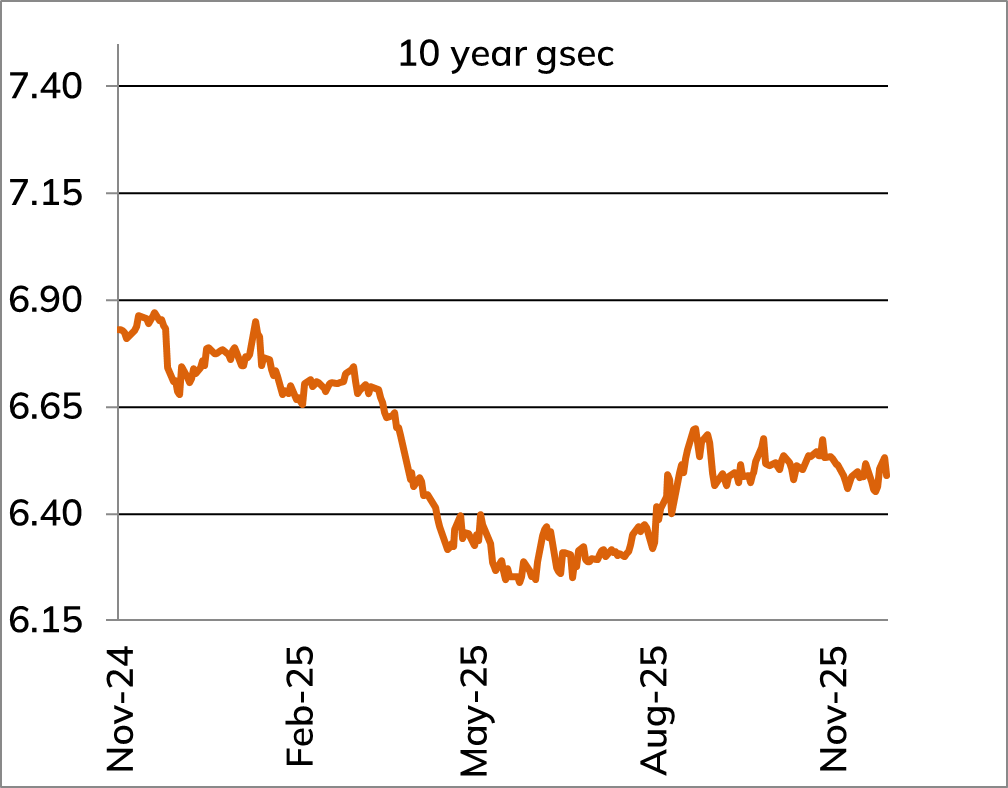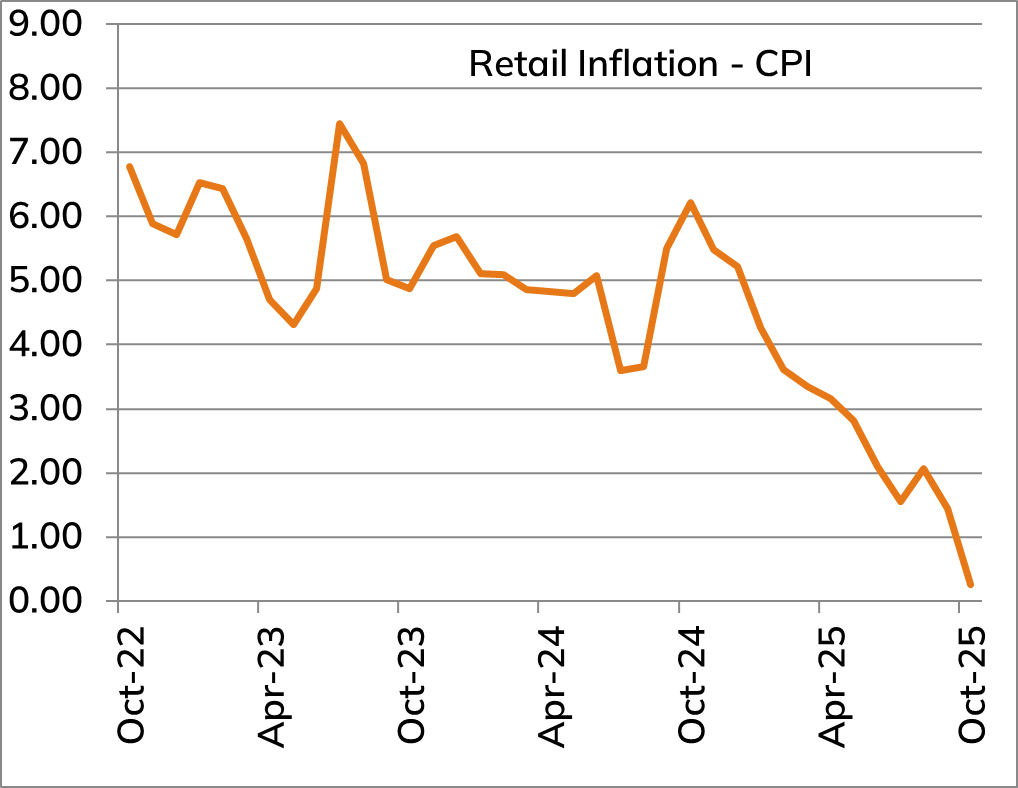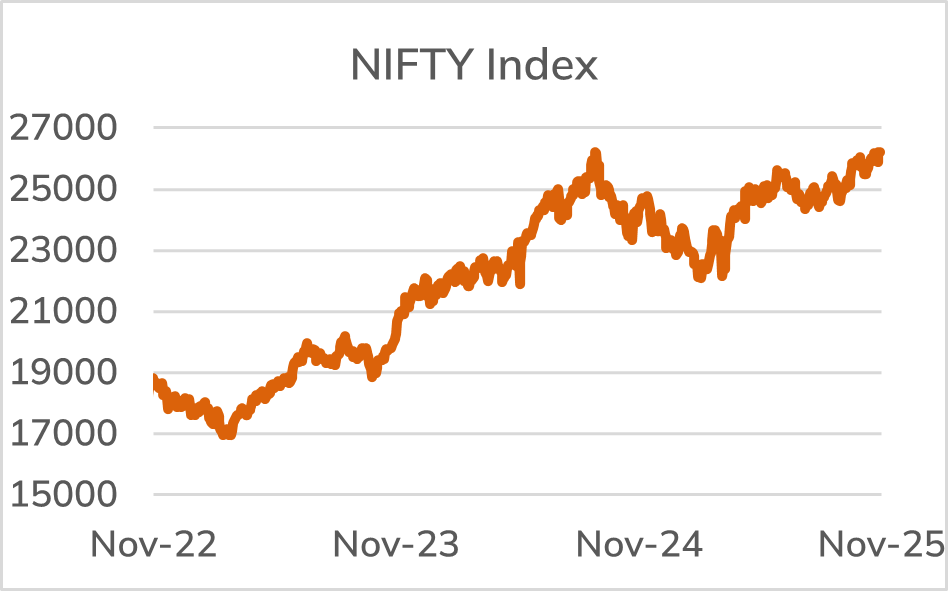| November 28, 2025 | 1 Month |
1 Year |
|
| Rupees per Dollar | 89.46 | 88.70 | 84.49 |
| Oil (dollars per barrel) | 63.20 | 65.00 | 72.94 |
| Retail inflation (CPI) | 0.25% (October) | 1.44% | 6.21% |


- India CPI inflation declined to a series low of 0.25% yoy in October vs 1.4% in September supported by GST cuts implemented towards the end of September. GDP data for the Q2 however, surprised on the higher side at 8.2% on the back of consumer spending.
- Despite short term momentum in GDP growth, we maintain our expectation on RBI cutting rates by 25 bps in the December policy meeting. RBI may revise its FY26 CPI projection further downwards from 2.6%, giving RBI ample space to cut rates in the next policy and support the growth momentum.
- We continue to remain ‘neutral’ on the outlook for bond markets. We expect the 10-year yield to trade in a range of 6.45%-6.65%. While the 10-year segment may receive support from RBI Open Market Operations (OMOs) expected in the next quarter, the long term yields may remain under pressure on account of demand supply challenges.

| Index | 1 month (%) | 1 year (%) | 3 years (%) |
|---|---|---|---|
| NIFTY50 | 1.9 | 8.6 | 11.8 |
| BSE100 | 1.6 | 7.3 | 12.8 |
| NIFTY500 | 0.9 | 5.5 | 14.5 |
| NIFTY Midcap100 | 2.0 | 8.2 | 24.0 |
At November 30, 2025
Nifty was up 1.9 % for the month of November 2025
- Hopes of rate cut and stable global environment kept the markets upbeat
- Within BSE 100 index, amongst sectors Technology / Oil & Gas outperformed while Cement / Infrastructure underperformed the broader market
We continue to maintain our neutral stance on the market in the short term and positive stance in the medium term
- Q2FY26 earnings were broadly in line with expectations with hopes of it turning the corner
- Tariff related uncertainty to have bearing on market performance
- Equity issuances remain high amidst steady domestic flows
- The Nifty’s one year forward P/E at 20x, is above its 5-year average
In the medium term, we expect certain important drivers for growth:
- India’s growth outlook is supported by twin policy easing to support domestic demand
- Government’s focus on regulatory reforms with a view to simplify compliance, improve ease of doing business, attract foreign investment, boost innovation and create a more efficient & resilient economy
Market consensus for Nifty earnings CAGR over FY2025-FY2027 at 9%

